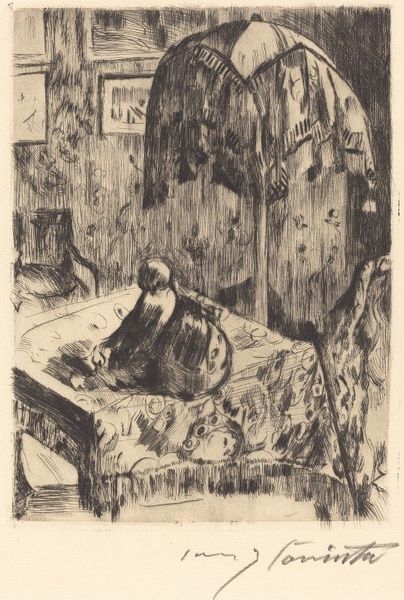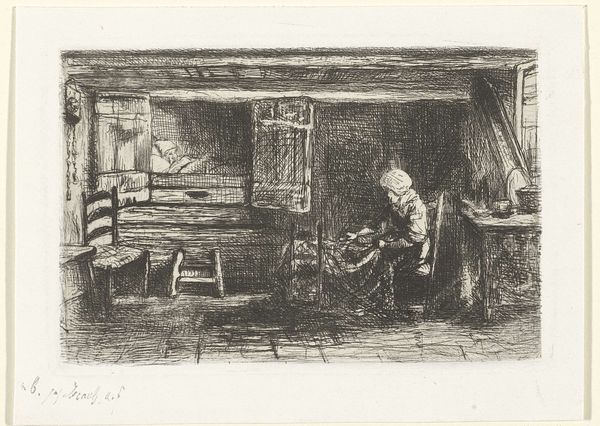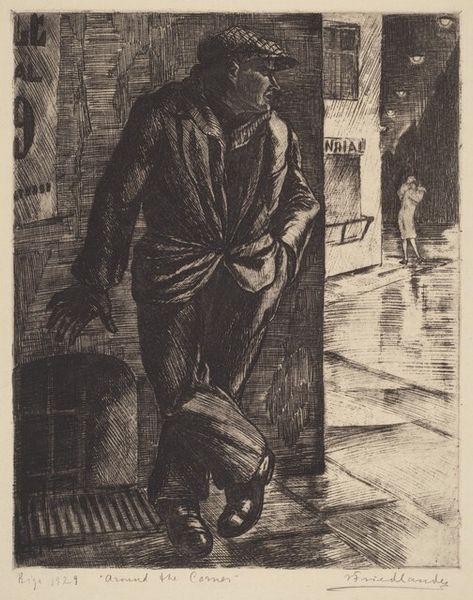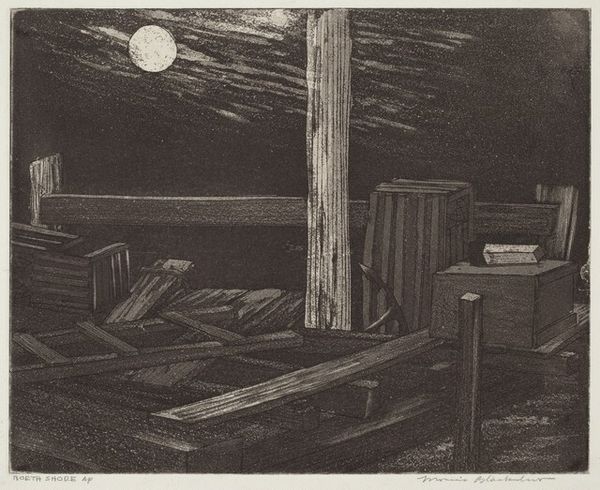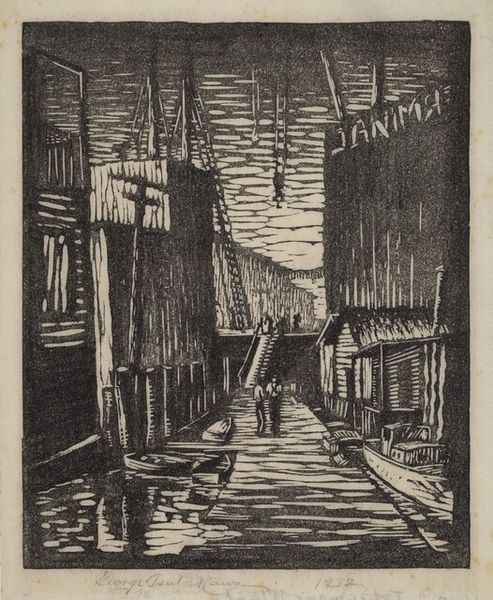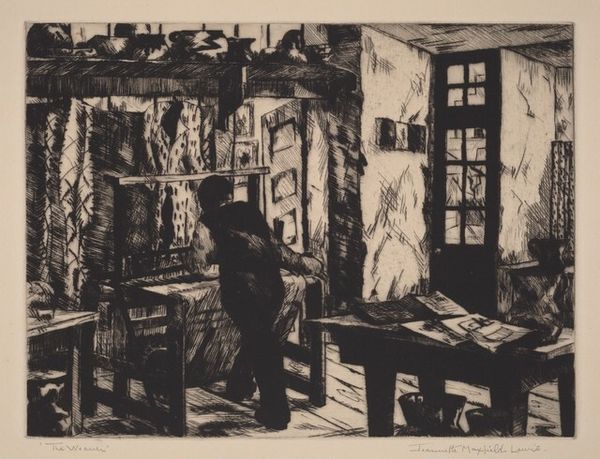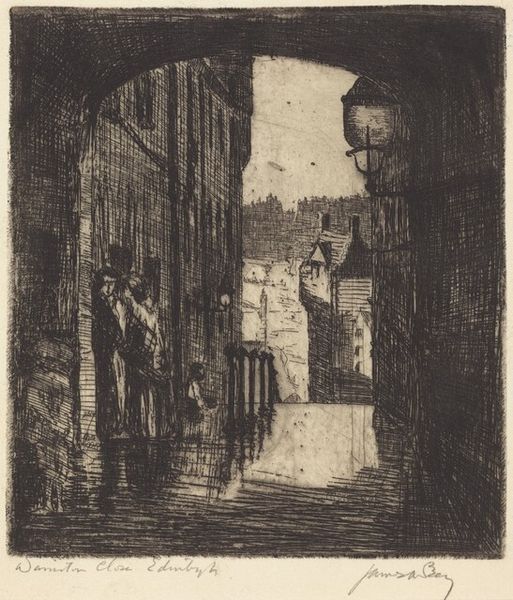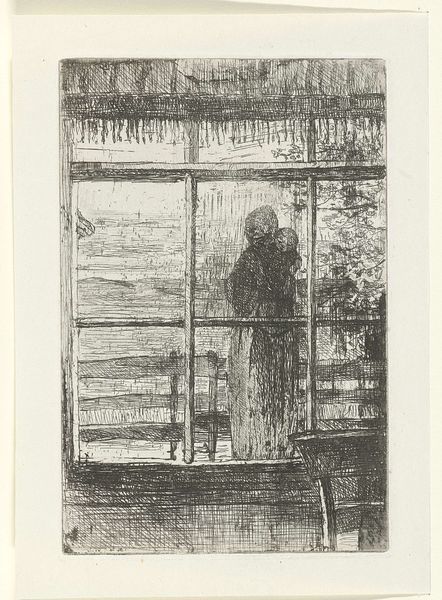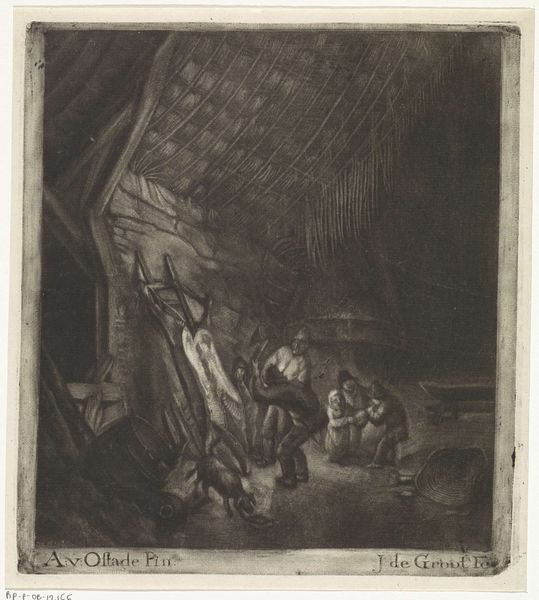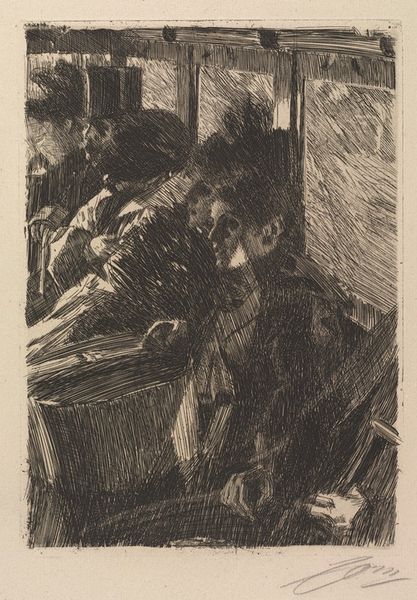
#
pencil drawn
#
toned paper
#
light pencil work
#
shading to add clarity
# print
#
pen sketch
#
pencil sketch
#
old engraving style
#
personal sketchbook
#
pen-ink sketch
#
sketchbook drawing
Dimensions: image: 9 1/2 x 12 1/2 in. (24.13 x 31.75 cm) sheet: 12 1/2 x 15 7/8 in. (31.75 x 40.32 cm)
Copyright: National Gallery of Art: CC0 1.0
Curator: George Overbury “Pop” Hart created this print, titled "Springtime, New Orleans," in 1925. Editor: It's evocative—the dense, shadowed interior against that brighter cityscape. You can almost feel the stillness in the room, punctuated by the vibrant world outside. Curator: Hart's work often focused on everyday life, and this piece provides a window into a specific time and place. He wasn't a native, but became known for works depicting people on the margins in port cities. You could consider this interior a microcosm of larger socio-economic conditions in 1920s New Orleans. The figure seems confined and perhaps weary. Editor: There's a definite contrast at play, yes, but let's look at the formal structure. Notice how the artist employs strong verticals and horizontals with the window and shutters which act almost like framing devices for the organic lines of the figure and rooftops. The tonal gradations are also masterfully handled. The pen and ink is light in some areas to help provide shading and add detail, while heavier use of line in other areas emphasizes solidity, creating a composition that is structurally sound. Curator: Exactly, that’s where Hart really excels—taking these perceived observations of real life and then amplifying what he views to be universal, relatable anxieties felt across the lower and working classes. Editor: The texture, that slightly rough feel conveyed through the print, adds to this, doesn't it? A sensory component that reinforces the authenticity you're describing. This kind of close observation shows Hart had a remarkable ability to distil both structural form and the atmosphere of a place using a relatively limited medium. Curator: For me, knowing Hart’s penchant for capturing marginalised communities adds such crucial layers of meaning to an already impactful artwork. The use of shadow becomes more than aesthetic but also a depiction of their social conditions, highlighting how marginalised people tend to exist. Editor: Well, I suppose what remains significant is that, whether viewed through a socio-historical lens or strictly from a visual perspective, this is undeniably an insightful portrayal of space and time. Curator: I'll agree with you there—it's an incredibly complex work that reveals something new each time you engage with it.
Comments
No comments
Be the first to comment and join the conversation on the ultimate creative platform.
